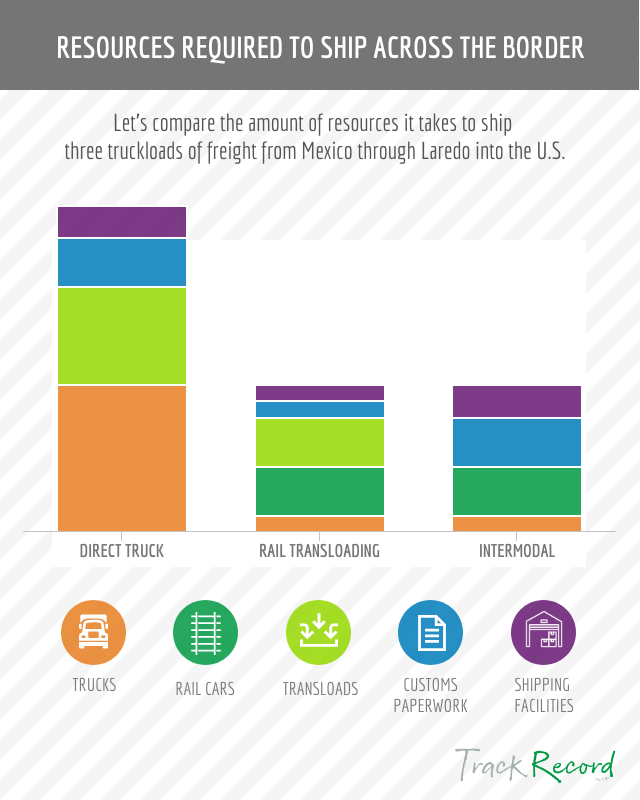In the transportation industry, hours of service (HOS) regulations specify the number of total hours property-carrying and passenger-carrying drivers can operate their vehicles. These regulations also stipulate how many consecutive hours drivers can be on the road before they are required to take a break.
On August 28, 2018, Mexico’s new HOS regulations went into effect. While these regulations were put in place to prevent drivers from experiencing physical and mental fatigue and promote roadway safety, they can also have impacts to your supply chain. Here’s what you need to know — and what you can do — to keep your supply chain moving in the new normal.
What Are the Mexican HOS Regulations?
While Mexico has had some HOS regulations in the past, this is the first time the country has managed driving time at the federal level. Before, HOS rules were determined by transportation companies, and that meant they varied widely. Under the new federal rules, drivers must abide by the following regulations:
- Operators cannot drive more than 14 hours total in a 24-hour period.
- After driving for 5 consecutive hours, drivers must take a 30-minute break before returning to the road.
- After reaching the maximum of 14 hours, drivers must take a full 8-hour break.
To ensure compliance with these regulations, drivers are required to carry a paper or electronic log book to track their time on the road.
What Is the Impact of the Regulations?
Although the new Mexican laws were set with good intentions, the changes will likely result in tighter truck capacity and increased rates.
In the U.S., the ELD rule, which requires use of electronic logging devices and more strictly enforces HOS regulations, yielded exactly that: As drivers were forced to comply with HOS regulations, there simply weren’t as many hours to (legally) drive in the day. With fewer available driver hours, capacity is more limited than ever. As companies scramble to secure capacity in a constrained market, trucking companies seize the opportunity to increase rates.
On top of costs and capacity, the safety of drivers and cargo is also a concern. As Mexican drivers are making more frequent stops, it opens up greater opportunity for theft, especially since there are not enough safe and secure rest areas in Mexico to support compliance.
How to Navigate the New Normal
So how do you keep your supply chain moving efficiently and cost effectively in the face of constrained truck capacity and rising rates? Rail offers a solution to capacity, cost and safety alike:
- Capacity: One rail car can hold the equivalent of three to four truckloads, offering the capacity to move large amounts of freight.
- Cost: Trains typically offer a lower cost per ton mile than trucks, especially when hauling freight long distances.
- Safety: Rail cars are more difficult to access than over-the-road trucks, and they can be equipped with a high-security seal and monitored closely to keep product out of thieves’ reach.
Rail can be especially efficient when shipping across the border. By consolidating several truckloads of freight into rail cars on a single train, you’ll see reduced customs paperwork and skip delays with seamless border crossing.
What Are My Rail Options?
If you rely on truck transportation today and don’t have access to rail at either the origin or destination (or both), you can still access rail.
Thanks to intermodal shipping and transloading, products can be transferred between trucks and trains, allowing shippers and receivers to use rail for the long haul.
- With intermodal, products travel in containers that are lifted on to or off of trucks and trains. Products stay in the same container for the entire haul. There is no additional handling of the freight.
- With transloading, products are transferred between trucks and trains by various loading and unloading processes, depending on product type rather than staying in the same container for the entire haul. For instance, a forklift may transfer palletized goods from a truck to a larger rail car, or a crane may lift heavy products like steel beams off a rail car and place them on a flatbed truck.
Both processes allow shippers access to rail, even if the origins or destinations aren’t rail served.
How Do the Options Stack Up?
Compared to truck, intermodal shipping and transloading offer more efficient transportation options.
Truck: Let’s say you ship across the border through Laredo by truck alone. Three trucks pick up the product. Three bridge carriers move it across the border. And three more trucks take it the rest of the way to its U.S. destination. That’s a lot of trucks. And in between, you have three sets of customs paperwork, plus warehousing and transloading costs.
Transloading: One truck picks up the product and makes three trips to a transload facility, where the product is transferred to a train for final delivery. That’s one truck, one train, one set of customs paperwork. If the destination isn’t rail served, you can use a truck for final delivery, too.
Intermodal: One truck picks up a container with the same dimensions as an over-the-road unit and makes three trips to an intermodal facility where those containers are then transferred directly to a train. That’s one truck, one train and three sets of customs paperwork — but no additional handling of the product in between. In the U.S., you can schedule three deliveries by one truck to the final destination(s).
The Bottom Line
All said, while using truck transportation may be your norm, Mexican HOS regulations are changing the cross-border game. When capacity gets tight and rates spike, using trucks to run shorter distances and using rail for the long haul provides a safe, cost-effective and efficient option.
Are you using your truck capacity the right way? If you want to learn more about your options, get in touch.
Related Articles:
- What Is Mexico Energy Reform?
- How to Access the Mexico LPG Market
- Can B2C Supply Chains Teach B2B a Thing or Two?










